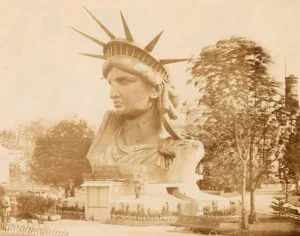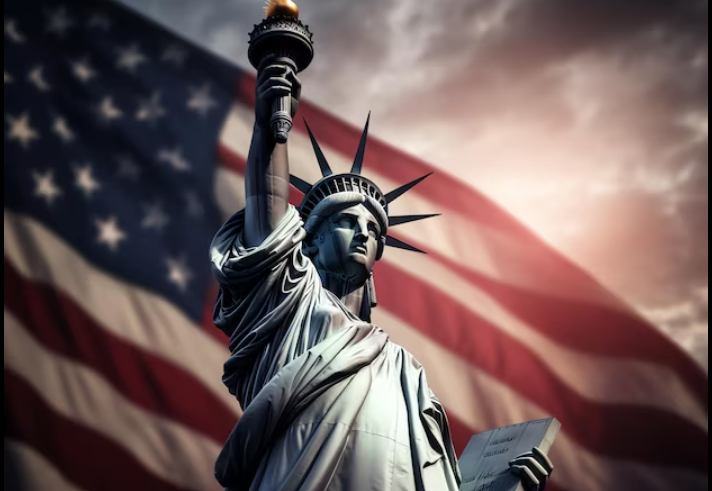Introduction
The Statue of Liberty, a towering figure standing majestically at the entrance of New York Harbor, has become an enduring emblem of freedom, hope, and the indomitable spirit of America. Gifted by France to the United States in 1886, this monumental statue transcends mere aesthetics, encapsulating the sacrifices made for freedom and the ideals of a nation that aspires to be a beacon of hope for those yearning for a better life. As we delve into the history, symbolism, and modern relevance of the Statue of Liberty, we uncover the profound meanings behind this iconic monument and its significance in today’s world.

Historical Context: Birth of an Icon
The Statue of Liberty was born during a period of intense social and political change, not only in the United States but also in France. Following the Franco-American alliance during the American Civil War, French political thinker Édouard René de Laboulaye, a fervent supporter of American ideals, proposed the idea of a statue to commemorate American independence and advocate for the principles of liberty and democracy. Laboulaye envisioned the statue as a gift from France to the United States, symbolizing friendship and shared values.
Designed by French sculptor Frédéric Auguste Bartholdi, the statue was modeled after Libertas, the Roman goddess of freedom. Construction began in France in 1875, involving extensive collaboration between engineers, artists, and laborers. Gustave Eiffel, renowned for his work on the Eiffel Tower, played a crucial role in creating the statue’s internal structure, ensuring its stability. The statue was disassembled and shipped to the United States in 1885, where it was reassembled on Liberty Island.
The statue was officially dedicated on October 28, 1886, in a grand ceremony attended by thousands, including President Grover Cleveland. Standing at a height of 305 feet from the base to the tip of the torch, the statue is made of copper plates that have weathered to a green patina over time, adding to its beauty and historical significance.

Symbolism and Meaning: More Than Just a Statue
The Statue of Liberty is imbued with rich symbolism that extends beyond its physical presence. At the heart of its design is the message of freedom and enlightenment. The torch, held high above Lady Liberty’s head, represents the light of freedom that guides people toward liberty and hope. It is a beacon that illuminates the path for those who seek refuge and a better life in America.
The tablet in her left hand is inscribed with the date of the American Declaration of Independence, “July IV MDCCLXXVI” (July 4, 1776), serving as a powerful reminder of the values upon which the United States was founded. This connection to independence reinforces the idea that liberty is a fundamental right for all people.
Additionally, the statue’s broken chains at her feet signify the liberation from oppression and the triumph over tyranny. This imagery resonates with the struggles faced by countless individuals and groups throughout history, from enslaved people to immigrants seeking a new beginning.
The crown of the statue, adorned with seven spikes, symbolizes the seven continents and seas, reinforcing the idea of universal liberty. The statue’s global significance reflects its role as a symbol not only for the United States but for the world—a commitment to human rights, justice, and the belief that every individual deserves freedom.
The Sacrifices Behind Freedom: A Testament to Humanity
The statue stands as a poignant reminder of the sacrifices made by countless individuals in the pursuit of freedom and justice. Its very existence is a testament to the friendship and cooperation between the United States and France, two nations that have historically championed the principles of liberty and democracy.
Moreover, the Statue of Liberty embodies the stories of millions of immigrants who have passed beneath her watchful gaze. For many arriving at Ellis Island, she was their first glimpse of freedom and opportunity in a new land. The statue symbolized hope, a promise that America was a place where dreams could be realized, irrespective of one’s background or past.
These immigrants faced numerous challenges—long journeys, cultural adjustments, and often harsh realities upon arrival. The sacrifices they made, leaving behind their homes and loved ones in search of a better life, echo the broader narrative of the American experience. The Statue of Liberty honors their courage and resilience, reminding us of the transformative power of hope and determination.

Modern Relevance: A Call to Action
In contemporary times, the Statue of Liberty continues to inspire discussions about immigration, freedom, and human rights. As global conflicts, economic disparities, and social injustices displace millions, her message resonates more powerfully than ever. The statue serves as a symbol of refuge and acceptance, challenging us to reflect on the values of compassion and inclusivity.
Recent movements advocating for immigration reform and human rights have invoked the statue as a rallying point. Activists highlight her as a reminder that the ideals of liberty and justice are not just historical concepts but living principles that must be actively upheld and defended. The current climate surrounding immigration policy in the United States and around the world often contrasts sharply with the welcoming message embodied by the statue.
The image of Lady Liberty has also been used to galvanize public opinion on issues like climate change, racial justice, and women’s rights, demonstrating her enduring relevance as a symbol of hope and progress. In this way, the statue serves not only as a monument of the past but also as a call to action for future generations to continue striving for a world that embodies the values she represents.

Conclusion: A Beacon for Future Generations
The Statue of Liberty remains an enduring icon of freedom, representing the sacrifices made by those who have fought for liberty throughout history. It embodies the hope and dreams of millions who have sought refuge in a land where they can express themselves freely. As we continue to navigate the complexities of our world, the statue stands tall, reminding us of our collective responsibility to uphold the values of freedom, justice, and equality for all.
The iconic statue is not just a monument of the past; it is a clarion call urging us to ensure that the light of liberty continues to shine brightly for generations to come. Its legacy compels us to reflect on our shared humanity and the sacrifices required to achieve a more just and equitable world. In celebrating the Statue of Liberty, we honor not only the principles it represents but also the countless individuals who have paved the way for a future defined by hope, resilience, and the unyielding quest for freedom.
